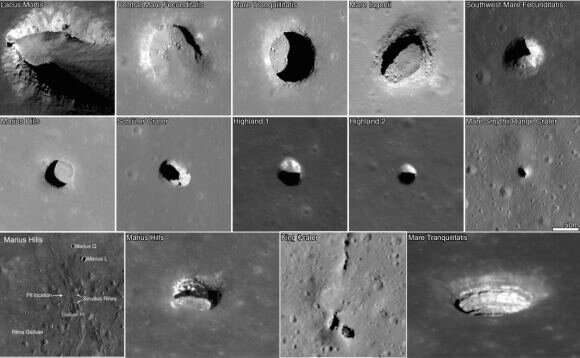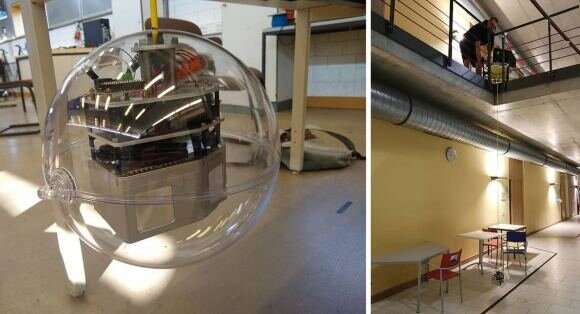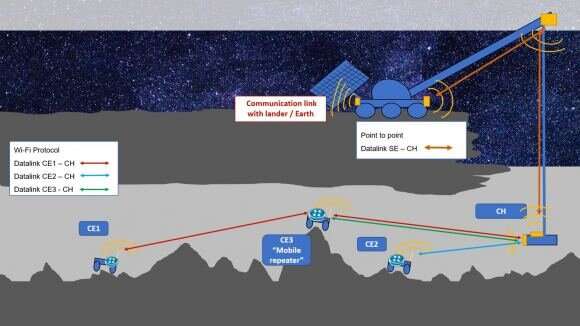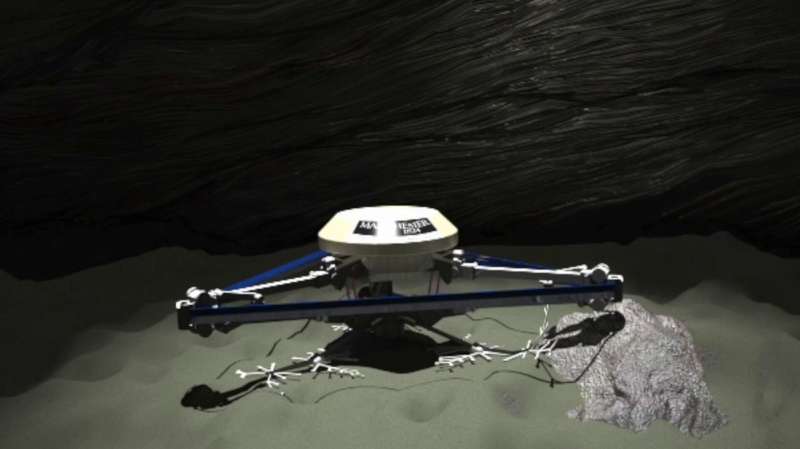From the five original concepts in the first Sysnova studies, ESA winnowed it down two three "mission scenarios"—one to find cave entrances, one to thoroughly study a cave entrance, and one explore a lava tube using autonomous rovers. ESA then decided to further evaluate two mission concepts that focus exclusively on exploring a cave entrance, but combining aspects of all three original mission concepts.
Understanding even the entrances of lunar caves can prove invaluable to understanding the resources that might be available in the subterranean world of the moon. It is also key to understanding the radiation protection afforded by the lunar regolith. That protection, depending on its efficacy, can prove to be a game changer in where any potential permanent lunar base would be located.

The first selected mission plan is on led by the University of Würzburg. They developed a spherical probe that can be lowered into a cave mouth by a crane attached to a rover. The probe itself is encased in a clear plastic shell and will contain 3-D lidar, an optical camera, and a dosimeter that will allow the probe to read radiation levels at the cave entrance.
Wireless power and communication is the focus of the second mission plan, developed by the University of Oviedo. In its scenario, a "charging head" is attached to the end of a rover-based crane, which is then used to power and directly communicate with autonomous rovers that do not have their own internal power source. Power for the rover and charging head will come directly from solar panels connected to the rover.

Mission duration for these experiments would be planned for one lunar day, or approximately 14 Earth days. ESA plans to link the mission outcomes of these two project directly to two of their concerted lunar exploration efforts, known as the European Large Logistics Lander (EL3), which will help build up the infrastructure needed for a permanent presence, as well as the Moonlight initiative, which focuses on wireless communication and navigation for lunar exploration vehicles.

Both of these proposed missions are still conceptual at this stage, and neither has received full funding for anything close to planning a fully fledged mission. However, it is clear that ESA's stepwise process is providing value even before any mission is launched—the concepts that have resulted from it are novel and potentially executable with enough willpower and funding. Missions that have made it this far in the process stand a good chance at eventually becoming reality and contributing to the effort to permanently colonize the moon.
Explore further



